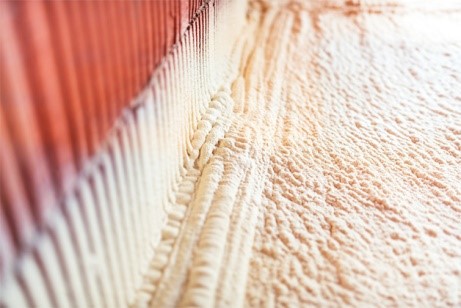Spray foam insulation is a type of insulation material that can prevent the entry of cold air or warm air from the outside or even the escape of inside air to the outside, thereby reducing the need for more energy expenses for temperature control purposes. It is a very popular option for home insulation today.
Table of Contents
How Much Does Spray Foam Insulation Cost?
Open cell spray insulation costs approx. $0.44 to $0.65 per board foot. 1 board foot is actually 1 sq. foot that is 1-inch thick. You need to spend $1,281 to $3,727 on an average. Most of the contractors tend to charge as much as $2,474, on an average. The cost of Closed-cell foam is much more, about 1 to 1.5 USD per foot. It is costlier as compared to the Open-Cell spray foam insulation, but offers a superior level of insulation – making it perfect for regions that experience extremes of temperature and weather conditions.
For 40 mm thick board, the Spray foam loft insulation UK cost is approximately 27 pounds per board meter. The Spray Foam Loft Insulation Cost is determined by a wide range of factors, like:
- Type of spray foam insulation material used, Open-Cell or Closed-Cell
- The total surface area that must be covered
- The overall effort needed for the insulation installation
- Size and amount of spray foam that would be needed
- How tough it is to access the area
- How thick material you would need
- How the installation must be done
- Location of your home
- Contractor that you are going for
It is important to get quotes from at least 5 – 6 different contractors in the local area, and find a Spray Foam Insulation service provider that offers the cheapest services.
What is Spray Foam Insulation?
Spray Foam Insulation is a chemical product made up of polyol resin and isocyanate. It works by getting enlarged many times its original size, when sprayed onto a surface, and covering the entire area to seal it against outside air. Drafts of cold air or warm air from the outside cannot enter the insides of a home when you have this kind of spray foam insulation material sprayed in place. It is a great material that works as an air barrier, and can help seal gaps in walls, floors and ceiling, thus preventing the entry of air.
Spray Foam Insulation Can Be of two types:
- Open-Cell Spray Foam Insulation
- Closed-Cell Spray Foam Insulation
Both types can ensure more energy efficient homes, with the Closed-Cell variety being more powerful than the former. In the Closed-Cell Spray Foam Insulation, the cells are located closer, thus ensuring more comfort and a higher level of temperature control. Your energy bills can be reduced due to this reason.
Advantages of Spray Foam Insulation
There are plenty of benefits, such as:
- Sealing of all gaps and cracks, thereby aiding in better temperature control
- Reducing energy usage and saving money
- Ensuring better comfort and health
- Preventing the entry of pests through cracks in walls, floors etc
Disadvantages of Spray Foam Insulation
The initial costs of installing this type of insulation can be quite high. Over time, you can recover the expenses in terms of energy savings and a higher level of comfort. But the upfront expenses might be more than what you have to pay for other types of insulation materials out there.
Yes, it is absolutely worth the expense – given that it is able to reduce energy requirement by as much as 35%, with no loss of comfort or efficiency. According to estimation by The U.S. Department of Energy, 56% of the energy that is consumed in a house is spent on cooling and heating purposes. When you seal air leaks and add insulation, it is possible to save as much as 20% on energy bills every month.
Spray Foam Insulation can definitely boost the resale value of your home, and help improve the thermal efficiency of the inside space. It can be effective in reducing energy bills, which makes it is one of the best options to spend money on. When spray foam is used to insulate a home, a higher resale value can usually be expected.
While this kind of insulation is more expensive as compared to traditional options, over a period you can recoup the expenses in terms of savings in energy bills. When it comes to the comfort of your loved ones, can you actually put a price on that?
Once it is cured in a proper way, spray foam insulation happens to be a safe option. It is unlikely to lead to any structural problems for a building or health-related issues for owners or residents.
In a few circumstances, toxic emissions can potentially be generated by Spray foam. This kind of insulation can also be disturbed by building disassembly, demolition or renovations that are carried out many years later after the installation. When hot work is carried out close to polyurethane foam, there can be possible exposures to emissions of toxic materials like isocyanates.
Conclusion:
It can be risky to install it in areas that are too near to ceiling light boxes and electrical boxes, on the roof or closed-cavity spaces. In case you have a history of asthma problems, respiratory diseases or skin issues, you might like to reconsider the decision for this kind of insulation.










